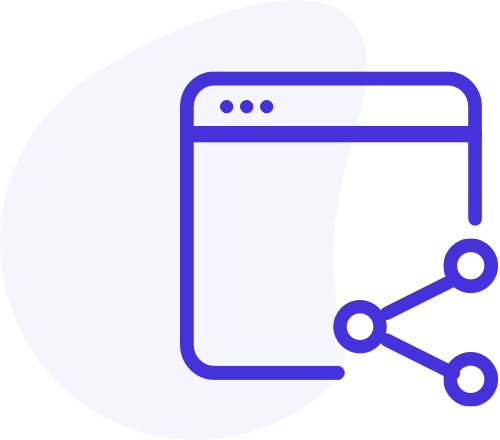A well-planned call-out campaign can make a lasting impact on your audience. Whether your goal is to boost engagement, drive conversions, or increase brand visibility, the key lies in creating messages that resonate and inspire action. Building such campaigns requires a structured approach that combines creativity, audience understanding, and data-driven decisions.
Understanding Call-Out Campaigns
A call-out campaign is a marketing initiative designed to directly engage a specific audience segment through targeted messaging. It aims to capture attention, encourage participation, and strengthen brand relationships. These campaigns often take place across multiple platforms, such as social media, email marketing, and digital advertising, allowing brands to connect with audiences in real time.
Why Call-Out Campaigns Matter
Call-out campaigns are not just about generating clicks. They build emotional connections between brands and consumers by making audiences feel seen, valued, and involved. Successful campaigns blend strategic timing, personalized content, and clear objectives to deliver measurable results.
Defining Campaign Objectives
Every successful campaign begins with a clear understanding of what it aims to achieve. Objectives guide creative direction, audience targeting, and performance tracking.
Setting SMART Goals
Use the SMART framework: Specific, Measurable, Achievable, Relevant, and Time-bound. For example, instead of saying “increase engagement,” set a goal like “increase social media engagement by 20% within 30 days.” Clear goals keep the team focused and help measure success effectively.
Aligning Objectives with Brand Vision
Your campaign should reinforce brand identity and long-term marketing goals. If your brand promotes sustainability, for instance, your call-out messages could encourage customers to share eco-friendly habits or product experiences.
Identifying and Understanding Your Audience
Audience insight is the backbone of a high-performing call-out campaign. Without knowing who you’re addressing, even the most creative message can fall flat.
Audience Segmentation
Divide your audience based on demographics, interests, or behavior. A campaign targeting young professionals, for example, might use humor and digital-first visuals, while one targeting corporate buyers may prefer professional and data-backed messaging.
Customer Journey Mapping
Understanding where your audience is in their buying journey helps tailor the tone and content of your campaign. New users might respond to awareness-oriented messages, while existing customers could engage with loyalty-driven or referral campaigns.
Crafting Compelling Messages
The heart of every call-out campaign lies in its messaging. The words, visuals, and tone must align to capture attention and spark engagement.
Developing an Authentic Voice
Authenticity is key to connecting with audiences. Avoid overly promotional language; instead, focus on value and emotion. A call-out message like “Tell us how our product fits your lifestyle” feels more genuine than “Buy now for a discount.”
Balancing Creativity with Clarity
While creativity makes your message stand out, clarity ensures your audience understands what action to take. Use simple, direct language supported by striking visuals or videos that communicate your message instantly.
Call-to-Action (CTA) Optimization
A strong CTA drives engagement. Phrases like “Share your story,” “Join the challenge,” or “Nominate a friend” motivate audiences to act immediately. Always ensure the CTA aligns with your campaign goals.
Choosing the Right Platforms
The success of a campaign also depends on where it runs. Selecting the right platforms ensures maximum reach and relevance.
Social Media Campaigns
Social media platforms such as Instagram, Facebook, and TikTok are ideal for interactive call-outs. Use hashtags, polls, and video content to encourage participation.
Email Marketing and Newsletters
Personalized email campaigns work well for targeted audiences. Segment subscribers and deliver tailored call-out messages that invite feedback, reviews, or participation in contests.
Website and Landing Pages
Dedicated landing pages create a centralized experience for users responding to your campaign. They also make it easier to track engagement metrics such as conversions and time spent on the page.
Timing and Frequency
Timing can make or break your campaign. Launching at the wrong moment or overloading audiences with messages can reduce effectiveness.
Strategic Scheduling
Analyze audience activity patterns to determine the best times to post or send messages. For instance, B2B audiences may engage more during weekdays, while lifestyle campaigns might perform better on weekends.
Maintaining Consistency
Keep your messaging consistent across all channels. Use a content calendar to manage frequency and ensure your audience remains engaged without feeling overwhelmed.
Leveraging Visual and Interactive Content
Visuals are often the first thing audiences notice. Engaging designs, videos, and interactive elements can significantly enhance participation rates.
Visual Storytelling
Use visuals to communicate your message faster and more effectively. High-quality images, infographics, and user-generated content can bring authenticity and appeal.
Interactive Campaign Elements
Polls, quizzes, and challenges encourage active participation. For example, a brand might invite followers to share photos using a specific hashtag to create a sense of community.
Tracking and Analyzing Performance
No campaign is complete without performance measurement. Monitoring results helps refine strategies and identify areas for improvement.
Key Performance Indicators (KPIs)
Track metrics such as engagement rate, conversion rate, click-through rate (CTR), and return on ad spend (ROAS). These figures reveal how well your campaign resonates with your target audience.
A/B Testing for Optimization
Test different versions of your message, visuals, or CTAs to see which performs best. A/B testing helps refine content for maximum impact and efficiency.
Building Long-Term Engagement
The goal of a call-out campaign should extend beyond immediate results. It should nurture relationships that encourage ongoing interaction and loyalty.
Community Building
Encourage user participation even after the campaign ends. Featuring customer stories or testimonials keeps audiences engaged and builds a loyal community around your brand.
Retargeting and Follow-Up
Follow up with participants through email or social channels. Thank them for participating and invite them to future campaigns or exclusive offers to maintain interest.
Learning from Feedback
Feedback is an invaluable tool for improvement. Use responses, comments, and analytics to understand what worked and what didn’t.
Surveys and Post-Campaign Reviews
Conduct surveys to gather qualitative insights from participants. These insights can help shape your next campaign for better alignment with audience expectations.
Internal Evaluation
Hold debriefs meetings with your marketing team to analyze the campaign’s overall performance. Identify the strongest strategies and areas needing adjustment.
Conclusion
A successful call-out campaign is built on strategy, creativity, and continuous learning. By setting clear objectives, understanding your audience, crafting compelling messages, and using data-driven insights, you can create campaigns that do more than grab attention they build lasting connections.
Consistency, authenticity, and engagement are the pillars that transform a simple marketing call-out into a memorable brand experience. When executed effectively, these campaigns not only drive participation but also foster trust, loyalty, and long-term growth. Reach out to BitWide for tailored marketing and recruitment solutions that drive real results.
Frequently Asked Questions
What is a call-out campaign in marketing?
A call-out campaign directly engages audiences through targeted messages that prompt participation or feedback.
How can I make my call-out campaign more effective?
Focus on clear goals, authentic messaging, and audience-specific content for maximum engagement.
Which platforms work best for call-out campaigns?
Social media, email marketing, and dedicated landing pages are ideal for interactive engagement.
How do I measure campaign success?
Track KPIs such as engagement rate, conversions, CTR, and audience growth to evaluate performance.
How often should I run call-out campaigns?
It depends on your goals and audience. Running them quarterly or during product launches ensures freshness and relevance.













